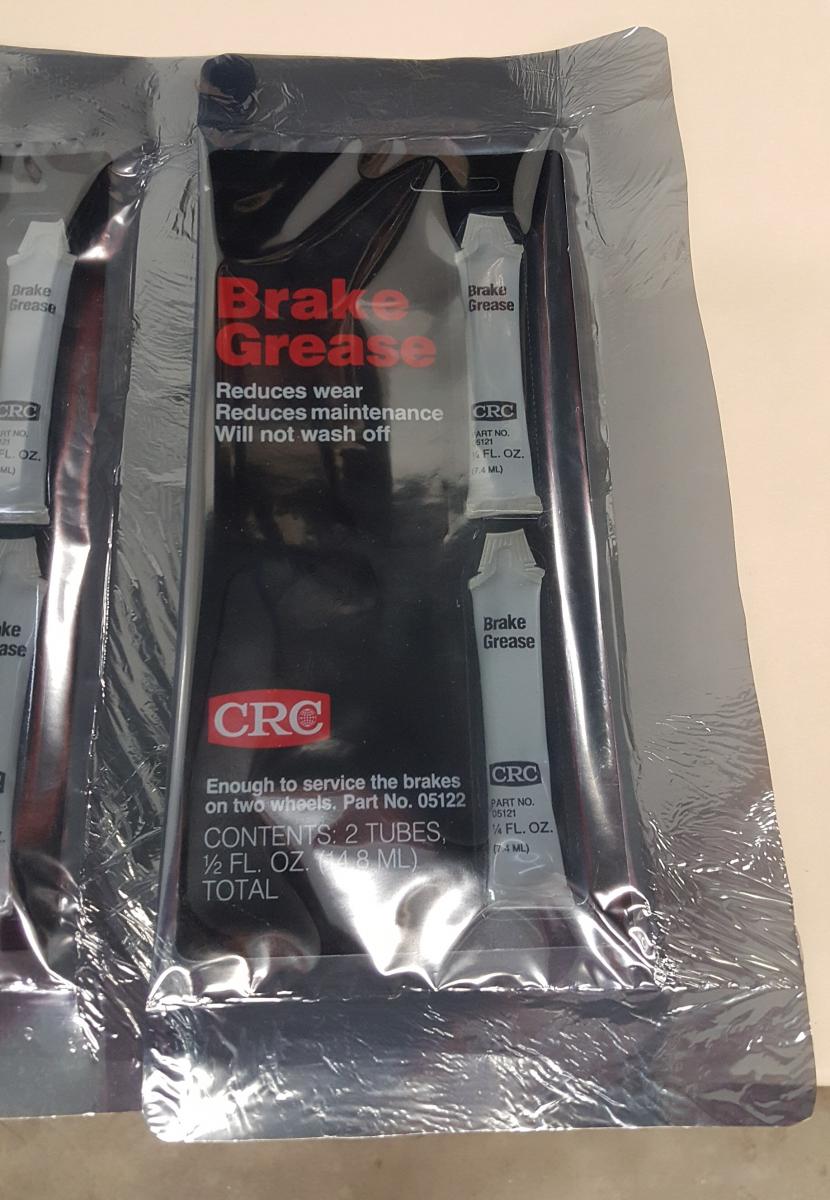You wouldn’t be entirely wrong if in your minds’ eye you picture an archives as a space with reams of paper, or rows of binders and ledgers. Sometimes we receive collections with 3-D artifacts composed of more than cellulose and leather. When these things have important contextual evidence related to an individual or companies papers, we like to maintain that association. This is particularly relevant when one considers our industrial design centered accessions. For researchers, having the tangible result of a design project in hand can enhance the story.
Caring for disparate types of objects is a challenge. Different materials have different preservation issues and ideal environmental storage conditions. At times a less-is-more approach is called for.
Consider the recent artifacts we acquired with the Peter Bressler collection: packages of brake grease! These items exemplify the ways packaging may be designed for functionality over visual impact. According to Bressler’s online bio his approach provides “user focused functional inventions while creating visual communication through aesthetic principals, assuring usability through application of human factors and ergonomics.”

Bressler is a designer who entered the product design world in Philadelphia after he graduated from the Rhode Island School of Design (RISD) with a BFA in industrial design in 1968. His graduate work at RISD was completed under Mark Harrison whose work is also represented in Hagley’s collections.
In Conservation we were presented with Bressler's unique packaging, 4 original consumer blister packs (a type of packaging in which a product is sealed in plastic, often with a cardboard backing). Most often, this packaging is used for personal care and cosmetic products. In our case, each contained a small single-use tube of grease, held in a container with a crimped edge upon which the word “Unette” is embossed.
The Unette clear Single-Use tube is still manufactured, and currently can be made of EVOH, Saran, or EVA polymer material. According to the company website, Unette is the originator of the single-use tube.
The grease tubes are most likely soft (plasticized) PVC (Polyvinyl chloride) plastic. These soft vinyl plastics are also used for flexible containers, shower curtains, dolls, and food wrap. Today there is less use of soft vinyl because of concerns of ingestion or skin absorption of the plasticizers, which migrate out of the plastic. PVC also releases hydrochloric acid as it degrades.
The plasticizers act as a sort of lubricant between the vinyl polymer molecules allowing it to be flexible, rather than rigid (as it is when used for PVC pipes). Packages such as these tubes were not intended to be kept indefinitely, because plasticizer migrates out of the plastic leaving a brittle material that fractures easily. Ultraviolet and visible light also cause yellowing and embrittlement.
Concerns with this type of package are possible seepage of the contents. The solution for storing these items was to create a tertiary layer of plastic packaging. We created heat-sealed pouches of polyethylene and aluminum laminated film. The “poly” layer melds to itself when heated, while the aluminum particles block transmission.
This version of film has a silvery appearance, but is mostly transparent so the object can be viewed without unsealing the bag. The downside to this method is that decomposition products from the vinyl plastic will be trapped in the package. Keeping these items away from light, in a cold storage environment will help reduce the loss of plasticizer and increase their lifespan. Since we have more than one Unette example, it will be possible to keep some in cold storage and others with the rest of the Bressler papers.
Laura Wahl is the Library Conservator at Hagley Museum and Library.
